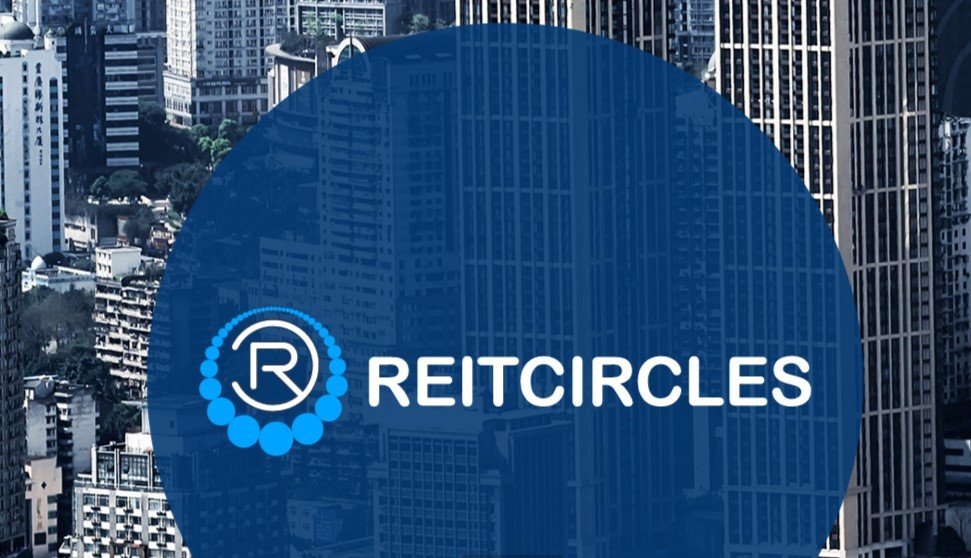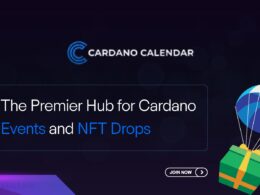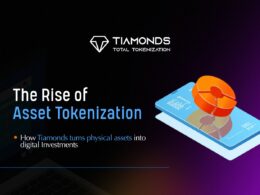When people who have real estate capital need a loan in difficult circumstances, such as job loss, high medical expenses or face unforeseen events, banks can deny the loan, or charge interest that is too high.
There are huge amounts of wealth in pension funds, institutional investors, and homeowners’ savings that are tied up in real estate. The need to unlock this value, and allow it to circulate in different forms, is growing.
Centralized institutions such as banks, and other large real estate monopolies, have great influence on housing prices, because they are the ones who negotiate asset prices. This creates a gap in the real price and only feeds the pocket of the intermediary and his commissions.
That is when blockchain decentralization shows its usefulness.
Reitcircles is a development that will tokenize global real estate on the Cardano blockchain. The platform will allow any property owner to sell a part of their assets, and obtain liquidity when they need it most.
Since it is a peer to peer platform, where all financial transactions occur through the blockchain, there will be no intermediary banking. The team says that all legal regulations, such as banking institutions, will be complied with, but the final transaction will avoid intermediaries and ensure the transfer of asset value at low cost.
It will be a decentralized protocol, so that small retail investors can diversify their investment portfolio by participating in verified real estate, and property owners can raise capital without the need for the participation of centralized institutions such as banks.
The team reports that the platform will also allow players in the real estate business, such as real estate agents, to host their businesses on this platform, and be able to manage the end-to-end process chain, such as asset hosting, sale, rent, etc.
Development will begin with residential homeowners, later expanding to vacation rentals, offices, and corporate assets.
Due to legal requirements, the platform will be limited to hosting assets for sale only where full ownership exists. To meet the goal, the team will actively pursue regulatory compliance to provide security for these tokenized assets.
The team understands the need to respect regulations around the world, therefore, they will actively monitor the global situation of real estate and the crypto industry, following the necessary procedures to obtain the required licenses.
Writer’s note: Blockchain industry regulations are in an early stage. Many countries have not yet defined which cryptocurrencies are considered securities, commodities or assets. I think there is a long way to go to allow real assets that have registries regulated by governments to be tokenized. My article at the end (1).
The team believes that as digital forms of currency such as CBDC (Central Bank Digital Currency) are introduced, the bridge between cryptocurrencies and real world assets will improve. It will be a slow but sure transition to a new economy, where real estate can be bought as easily as stocks and other staples. Reitcircles is proposed to lead the path to this transition.
Writer’s note: CBDCs are being developed in different countries, and in many others they are in a state of investigation. I believe that governments will issue this tokenized money and use it as an instrument of control and surveillance, and it will be very detrimental to the population. I leave my article at the end (2).
How Does It Work
Each asset hosted on the platform will be managed through a DAO (Decentralized Autonomous Organization), and the tools created in this structure will allow a better distributed management of the wealth of these assets.
The tokenization of the property will be locked in a smart contract, and the owner will be able to sell parts using an auction mechanism on the platform, and then be able to buy the tokens back from the open market. This way the owners will retain the property while they raise funds.
There will even be the possibility of selling limited bonds using NFT (Non Fungible Token) to raise capital and retain shares.
The NFT tokens that will be issued on the platform will be the only source of truth about the assets being sold, therefore it is important to specify the different metadata that this token will carry, which you can see here.
Either through their agent, or on their own, property owners will be able to easily register assets on the portal, after the due diligence.
The team claims to have conducted rigorous market and structural research on the global real estate, blockchain and NFT landscape, and believes that no competitor offers the same innovation.
The platform will have a simple interface, but sophisticated enough for institutional investors. The user will have a mobile application and a web application to interact with the backend of the platform, to easily execute the different complex interactions.
The development has a Layered Component Diagram:
Layer 1: IDENTITY ON BLOCKCHAIN
This layer is used to register the user in the blockchain (user metadata). For this it may be necessary to integrate technology such as Atala Prism, which already has this module.
Layer 2: BACKGROUND DATA TO HELP TOKENIZE THE ASSET
Before you can tokenize the asset, you will need various information about the asset in the real world, as well as the owner of the asset. In this sense, the initial modules that satisfy these requirements are:
- Risk assessment & Credit rating module: this person’s previous salary and credit payments can be obtained. Debts and outstanding liens in the name of this person may also be recovered. This will allow for a risk rating and the maximum offer/interest rate on the asset.
- KYC + AML module: the Know Your Customer and Anti-money laundering module will study the flow of capital and its holders, to comply with the laws.
- AI module: house prices can be obtained based on geographic location and recent sales prices in the neighborhood.
Layer 3: SMART CONTRACT TO ISSUE NFT AGAINST THE ASSET
Based on the information provided by L2, a smart contract will be used to issue an NFT of value equal to the requested loan amount against the real estate. This NFT issuance will be considered a debt against the house, and the local authorities where the house is registered will be notified. It will provide the lender with the right to recover the amount in case the borrower defaults.
Layer 4: DAO MODULES
In this layer there will be independent modules that can be attached to the NFT issued on the platform (L3), through the DAO.The different modules are described below:
TREASURY: every time an equity token transaction takes place, 10% of the transaction fees will go to the treasury, and this reserve will serve the real world funding needs of this asset for maintenance, legal advice, fees settlement agency and other needs. This module will also keep between 10-20% of the asset tokens that cannot be the object of any transaction, as reinsurance in limit cases.
TRADING: This module is responsible for the distribution of tokens (NFT bonds or equity tokens) from the initial owner to investors, and the subsequent negotiation between investors. This negotiation may be carried out in an environment regulated by national legislation.
STAKING: will be in charge of using the treasury financing module, and will distribute the staking among the different stakepools, so that the locked capital can be used to secure the Cardano blockchain.
LIQUIDATION: will be in charge of liquidating the loan when the borrower does not fulfill his obligation, whether they are NFT-capital issuance bonds or interest that is not deposited on time.
PRICE ORACLE: all token transactions that occur within the DAO, and may be published on the blockchain, to create real estate synthetic assets for derivatives trading.
TAXATION: compliance modules will be created according to the laws of the country, to respect the rules of payment of taxes for all transactions of capital tokens.
GOVERNANCE: The governance needs of the DAO will be handled by this module, for voting in decision making, especially with real estate issues, among other issues.

The Tokenomics
El token REIT is a native Cardano token for this project, created in January 2022, with a total supply of 45 billion, which will act not only as a governance token, but can also be used to transact on different assets hosted on this platform,such as transaction fees for buying and selling NFT real estate assets, protocol governance, Treasury, and unique NFT minting.
Since Cardano is a POS network, staking returns will be enabled for REIT token holders, for a more sustainable ecosystem.

The team is currently running a ISPO (Initial Stake Pool Offering), to obtain funds for development, which consists of keeping the ADA rewards granted by staking on the Cardano network, and delivering project tokens to delegators instead of ADAs.
The Roadmap

Writer’s note: at the time of writing this article, I could not find dates for the fulfillment of development milestones, nor in the website nor the roadmap published in the whitepaper.
The Team
N. SAHA -CTO: a seasoned entrepreneur, having experience in bootstrapping startups and software engineers in building and supporting applications end to end. Held technical leadership positions in mid to large companies.Graduate from IIT Kharagpur and MBA Kellogg School of Management, USA.
MALAY SAHA -CEO: Ex Telco executive for a Decade, Ex MAHINDRA & MAHINDRA General Manager. More than 3 decades of Marketing experience, Expert in creating auto brands, Single handedly created Isuzu in Oman for 2 decades, Bachelor of Engineering from NIT (India), more than 35 international awards. MBA from the TRIUM program (LSE,HSE Paris and Stern School of Management USA).
The team has outstanding Advisory Board Members such as ANURAG GUPTA, Ex-Google, HP, Synopsys, executive with graduate degrees from IIT, Kanpur (MS Physics, India), and the University of Arizona (PhD Optics) with more than 85 granted patents and 20 publications, based in San Jose, California, and ANDREW WESTBERG, a software developer and frequent contributor to Cardano community projects. In the past, he has worked for large companies like Walmart and Nike. He currently serves as the CTO of projectNEWM.
You can meet the whole team here.
Website: https://www.reitcircles.com/
. . .
(1) The Impact of Current Cryptocurrency Regulation: Cryptoassets, Commodities, or Securities?
(2) CBDC: Government Centralized Money











Comment has been made about how the team views CBDC. We are taking a realistic view of things. The fiat banking cycle which started with depegging from the gold standard in 1970 has run its lifetime of 50 years. And with the amount of money under management, it is highly unlikely that it is going to disappear immediately. The last phase of fiat banking will be that the central bank will gain more and more power. It is a flow of money that will happen from the smaller banks to the larger banks as we see it happening now. Hence as money flows into the central bank they will need an instrument that enables them to make the money work. And that will be the CBDC. Now as with all things in nature, it has always a very strange way to control things. Since CBDC is powerful but not sustainable (anything that grows too big also gains instability as a matter of the size) and comes with host of bad features, the crypto invention provides a viable alternative. And this is where the value preservation, sound money principles come to play. And this will hence grow (as the size of his market is very small …1T compared to 90+T of fiat economy). Thus you see…using the argument above, it is not black and white as we make it to be. It will be a game of coexistence. And it also means when CBDC come the digital rails will become easier to flow entire value chain and switch between crypto and cbdc.